The dancing of the flames. The smell of wood smoke. Roasting marshmallows and hotdogs. Songs around the campfire. The crackle and pop that only comes from a wood fire. These are all endearing memories and excellent reasons to create your own in ground fire pit. The backyard fire pit is a highly popular landscaping feature and a favorite outdoor area for gathering, with its attractive aesthetics and homey feel. However daunting you might find such a project, it is completely doable right in your own backyard.
First, you will want to research, decide upon, and plan the specific design you wish to create. Generally, an in ground fire pit is constructed with fireproof materials on a very level area of your yard that is a safe distance—usually 20 feet or more—from your house, trees, shrubbery, or other flammable structures. Research the local building codes of your town, city, and county regarding fire pits because they are often subject to local building codes. You‘ll want you beautiful fire pit to be in compliance!
The first step in construction is to create the foundation, which involves measuring the circumference of the circle containing your fire pit, and then laying whatever foundation you choose. Some options include sand or dirt, gravel, and concrete. Whatever material you choose for your foundation, be sure to allow for drainage; you don’t want a fire pit that holds water. Once your foundation is set, it’s time to build the outer wall of your fire pit. This usually involves some sort of natural stone, concrete blocks, or bricks. These can be laid in place for easier transference to another spot (if you choose to move your fire pit at some point) or the wall can be made more permanent with mortar. However you choose to go about creating your outer wall, be sure to level your stones, blocks, or bricks for safety and stability.
Once the outer wall is constructed, you can begin building the inner brick fire wall—which can, again, be laid in place or secured with mortar. As you construct the outer and inner walls, periodic measuring is the key to ensuring the uniformity of their thickness and circular shape. With the walls complete, you can, lastly, focus on a few final touches, such as carefully brushing the walls to remove any loose pieces of debris. If you choose to use mortar for your walls, a quick spray with your garden hose can help remove any superfluous mortar. Then your fire pit is ready for its first roaring fire!
An in ground fire pit offers the benefit, over their above ground counterparts, of eliminating much of the risk of leaping flames or embers. This is due to the generally smaller diameter and better containment of the flames compared to above ground fire pits. One potential pitfall of the in ground fire pit is the possibility of children, pets, or outdoor critters falling into the large hole in the ground. This is fairly easy to combat by building the pit in a well-lit area. Another strategy is to keep a cover on your in ground fire pit when it’s not in use. This is a very effective way to combat anyone or anything accidentally falling in. Most of all, be vigilant regarding your fire pit—supervision, especially of children and pets—is key to avoiding accidents and injuries.
Planning, preparation, careful construction, and proactive strategies will help ensure that your fire pit is doable, usable, and enjoyable by your family for many years to come.





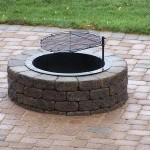




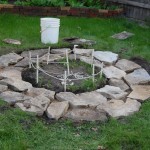
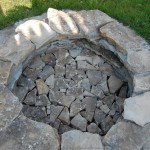

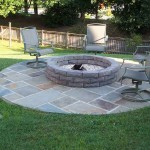






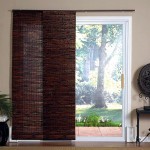















Tell us what you think about "Ideas for Creating Your Own In Ground Fire Pit"?